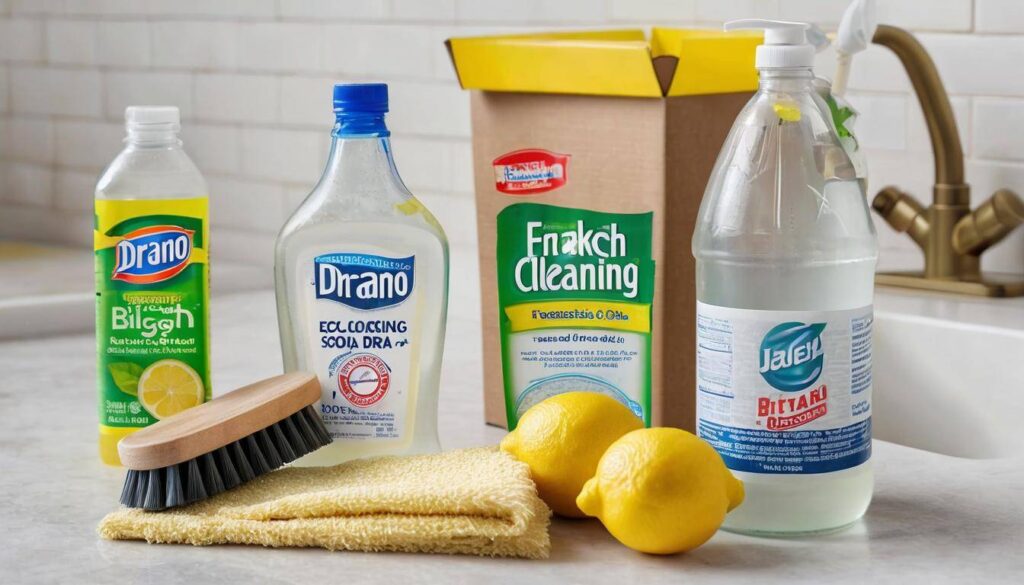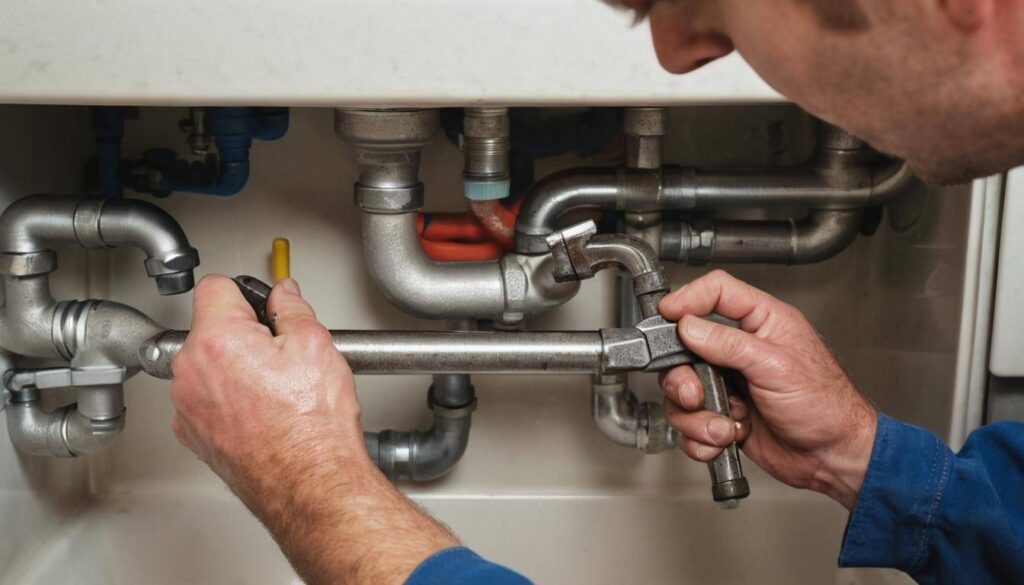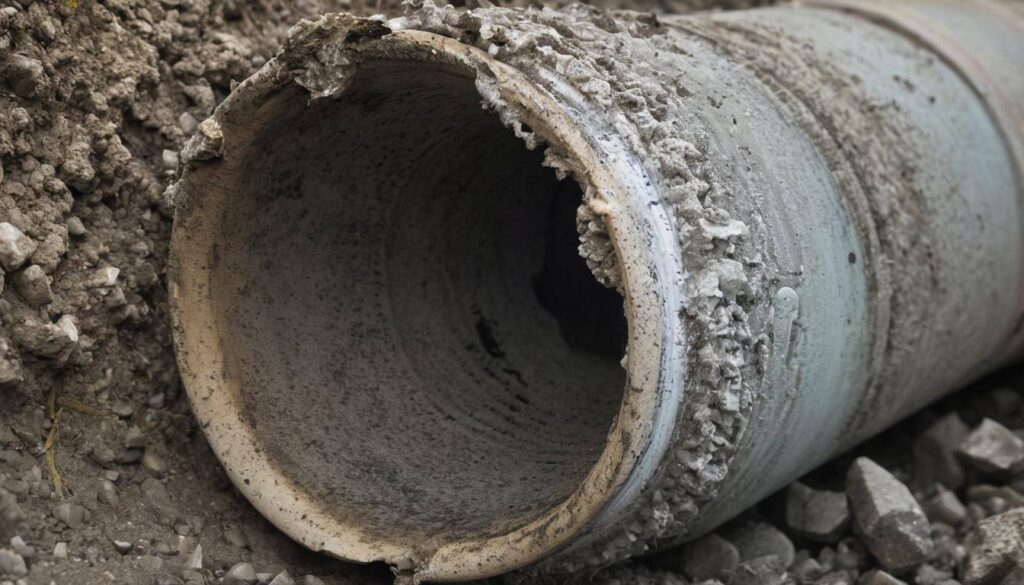Signs of a Faulty Faucet: How to Detect and Repair Common Issues
When your faucet begins to act oddly, like producing strange noises or malfunctioning handles, it’s a clear signal that it might be faulty. These are not just mere annoyances but important signs pointing towards a plumbing problem that cannot be ignored. Sometimes, you may even notice your water bill going unexpectedly high or find brownish water flowing out which can hint at internal corrosion in your faucet. Don’t worry – having these issues doesn’t mean you need a full replacement right away. The next step might be as simple as testing your water flow and pressure.
Signs of a faulty faucet may include persistent dripping, low water pressure, rust or corrosion around the base, and audible squeaking or grinding noises when turning the handle. Identifying these signs early can help prevent further damage and costly repairs.
Common Signs of a Faulty Faucet
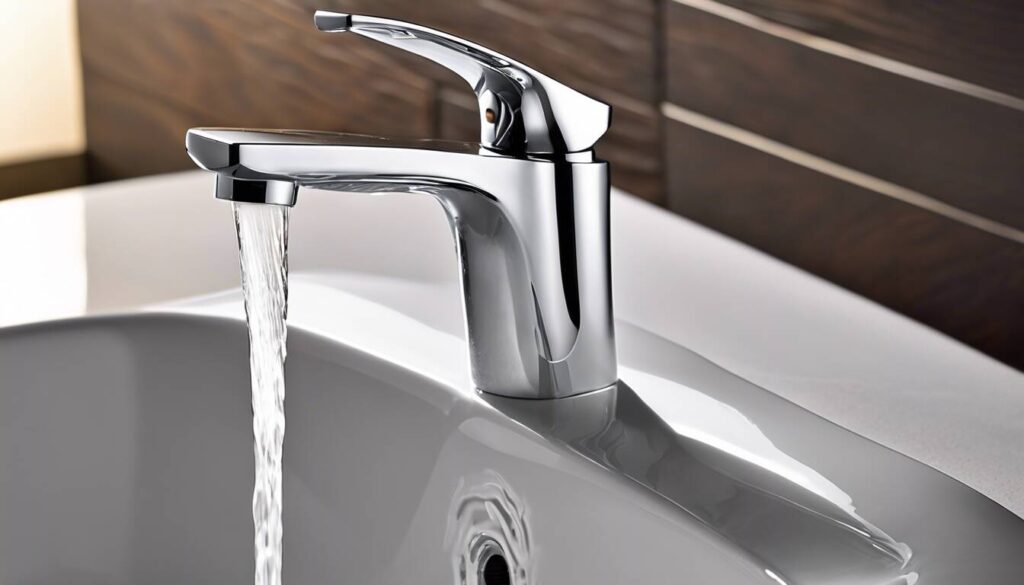
Picture this: You’re trying to enjoy a quiet evening at home, but all you can hear is the persistent dripping of your faucet. It’s not just annoying; it’s also an indication that something isn’t right with your faucet. Persistent dripping is one of the most common signs that there’s a problem. While some people might ignore it for a while, it’s important to remember that even small drips can add up to a significant amount of water loss over time.
Another telltale sign of a faulty faucet is irregular water flow. Imagine turning on the tap and experiencing spurts of water instead of a steady stream. It’s not just frustrating; it could be a sign of an underlying issue within your faucet. Irregular water flow can disrupt your daily routine and often indicates the presence of blockages or damage within the faucet mechanism. This inconsistency calls for swift attention to prevent further damage to the internal components.
Now, let’s talk about those unusual sounds. If your faucet starts squeaking or grinding when you turn it on, it’s like an alarm going off—something’s wrong! It could mean that there are worn-out or damaged parts inside that need to be looked at by a professional. This is usually a sign that something needs some fixing before it turns into a bigger problem down the line.
Visible corrosion might seem like just an aesthetic issue, but rust and corrosion on your faucet can lead to leaks and even health concerns if left unattended. Corrosion often indicates wear and tear, potentially leading to leaks or water contamination. It’s crucial to address this promptly.
Moreover, if you find yourself struggling to turn the handles or notice they’re loose or wobbly, it’s likely that the internal components are compromised and need attention. Difficulty in turning the handles, along with visible signs of wear or damage, should prompt immediate action to avoid further deterioration.
In addition to these visible and audible indicators of faucet issues, water discoloration and sudden spikes in water bills also serve as red flags indicating potential problems with the faucet.
Testing Water Flow and Pressure
When you turn on your faucet, the last thing you want is for it to trickle weakly or sputter inconsistently. To start, watch the water as it flows out of the faucet. Does it pour out steadily, or does it come out in a slow, uneven motion? If you notice slow or erratic flow, this may be a sign of internal clogging or other issues within the faucet. The ability to control water flow is crucial for everyday tasks like washing dishes or filling up a pitcher. Inconsistent flow can lead to frustration and inconvenience, making simple chores more time-consuming than they need to be.
Step I – Check Water Flow
To understand the health of your faucet’s water flow, observe its behavior from full blast to a gentle trickle. Slow or irregular flow patterns may reveal potential clogs or blockages within the faucet. This issue can often be attributed to mineral deposits, sediment buildup, or worn-out components hindering the water’s path. These obstructions might impede water from passing through smoothly and can significantly impact overall performance and convenience. An example of this could be if after turning on the faucet at full force, you notice that the water takes its time to build up pressure and then suddenly bursts out with some irregular spluttering. This inconsistent behavior is often a clear indication that there are problems inside.
Step II – Test Water Pressure
In addition to observing the flow patterns, measuring water pressure is equally essential. The adequate force behind the water is not only important for effective cleaning but also indicative of potential underlying issues. Using a pressure gauge allows for a precise numerical measurement of the water pressure flowing through your system. An ideal scenario would involve consistent and adequately forceful pressure throughout the process. Consistent pressure ensures smooth operations and helps avoid unnecessary wear and tear on your plumbing system. On the other hand, deviations in pressure could signal problems with the faucet itself or issues within your water supply system. For instance, if you observe steady pressure while washing dishes one day but find that the pressure drops significantly when using another faucet at the same time, this discrepancy could point to an underlying issue within your system that requires attention.
Consequently, conducting regular tests on water flow and pressure will allow you to uncover potential problems early on and address them promptly, preventing inconveniences and potentially costly repairs down the line. By keeping an eye (and an ear) on your faucet’s performance, you’ll ensure that it remains in optimal working condition for longer periods without unexpected disruptions.
Now that we’ve explored how to test and identify issues with your faucet’s water flow and pressure, let’s move ahead to discuss another common household nuisance—the challenge of addressing a leaking hose.
Addressing a Leaking Hose
Leaking hoses are like little drips that whisper “I need fixing” louder and louder until you can’t ignore them anymore. But don’t worry—this is a fixable problem.
First, the trickiest part is finding the exact spot where the hose is leaking. It might be around the connection points or at the base of the faucet. Look closely, maybe even run your hand along the hose to feel for any dampness. Once you locate the source, you’re ready to start solving the problem.
Step 1 – Identify the Source
Let’s begin by inspecting the hose connections and the base of the faucet to locate where exactly the leak is coming from. Sometimes it may be a loose connection or a worn-out O-ring causing trouble, but identifying the source is crucial for an effective repair.
Step 2 – Tighten Connections
If you find that the leak is happening at the connection points, grab a wrench and gently tighten those fittings. However, be mindful not to over-tighten and accidentally damage the connections. There’s a sweet spot between loose and too tight that you’ll want to hit.
Think of it as tightening a jar lid – not too loose that it won’t seal properly, but not too tight that it’s hard to open afterwards.
Remember, sometimes a simple quarter-turn can make all the difference.
Step 3 – Replace O-Rings
If tightening things up hasn’t stopped the drip, then it’s time to investigate further. Check the O-rings in the hose – they’re like little rubber bands inside that help keep everything sealed tight. Over time, these can get worn out or damaged, especially if they’re constantly exposed to water and changing temperatures.
By examining and replacing these O-rings if needed, you should be able to put an end to that frustrating drip once and for all.
Fixing a leaking hose isn’t always complicated. With a little know-how and some basic tools, you can take care of these issues before they become bigger problems. By being attentive to these details, you’re ensuring that your faucet remains in good working order for years to come.
Detecting Valve Issues
The valves in your faucet act like gatekeepers, controlling the water flow and temperature. When these components aren’t working as they should, you’ll definitely notice it. Irregular water flow or leaks coming from the spout may indicate issues with the compression valve, signaling potential problems that demand your attention.
Let’s start with the compression valve. If you notice irregular water flow or persistent leaking, there’s a chance that your compression valve might be at fault. The compression valve is designed to create a watertight seal when closed and open up to let water pass when turned. Over time, the valve seat – the part that connects to the spout – can wear out, leading to leaks and drips. In such cases, replacement of the valve seat or the entire valve assembly may be necessary to restore proper function.
Now, moving on to the cartridge valve – if you’re experiencing leaks or having trouble controlling water temperature, chances are your cartridge could be causing the trouble. This component regulates both water flow and temperature, so any issues with it can lead to discomfort and inconvenience. Thankfully, replacing the cartridge can often resolve these issues and restore smooth operation of your faucet.
By understanding how these valves operate and what signs to look out for, you can act promptly and avoid more serious problems down the line. Regular maintenance combined with quick action when issues arise will help keep your faucets functioning smoothly. So keep an eye out for any irregularities in water flow or temperature control – it might just be your faucet’s way of asking for a little attention.
Understanding how your faucet’s valves work allows you to catch problems early on and prevent bigger headaches later on. Now, let’s shift our focus to addressing one of those bigger headaches—handling corrosion.
Handling Corrosion
Corrosion can stealthily creep into your faucet, causing leaks and hampering its performance. It’s like an unwelcome guest that disrupts the tranquility of your plumbing oasis. But fear not! There are practical steps you can take to confront this issue head-on.
First, it’s important to address any surface corrosion that may have developed. You’ll need a mild cleaning solution and a soft brush for this task. These gentle tools can help in removing the surface corrosion without causing any abrasion to the faucet, keeping it intact and preventing further damage. If handled delicately, there is a good chance you can restore the faucet’s surface to its former gleaming glory. It’s a bit like giving your faucet a spa day—gentle pampering to rejuvenate its appearance and functionality!
Step I – Clean the Faucet
It’s crucial to use a mild cleaning solution that won’t harm the finish of your faucet. Avoid abrasive cleaners or implements as these could worsen the corrosion or cause scratches, further damaging the faucet.
Imagine using a soft brush to gently scrub away all the smudges and spots on your faucet; it’s like giving it a soothing massage to remove any tension—only in this case, the tension is caused by corrosion, not stress!
Once you’ve cleaned away the surface corrosion, it’s time to move on to the next crucial step: checking for severe corrosion that might require more invasive action.
Step II – Check for Severe Corrosion
More serious cases of corrosion may require components such as the valve stem or spout to be replaced in order to restore the faucet’s functionality. This step may seem more daunting, but by addressing severe corrosion promptly, you can prevent further damage and ensure that your faucet remains in top working condition.
In severe cases, you might have to think of it as giving your trusty old faucet a much-needed upgrade—kind of like replacing a worn part with a shiny new one. It’s all about keeping your faucet happy and healthy!
Successfully addressing corrosion not only keeps your faucet looking great but also ensures that it functions smoothly and efficiently, preventing leaks and prolonging its lifespan.
Optimal Performance Through Repairs
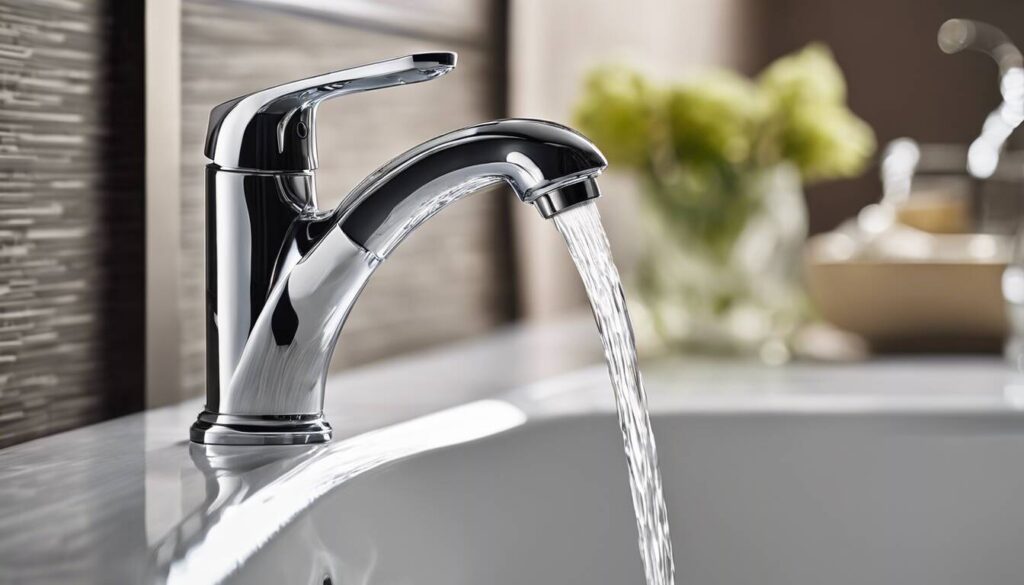
Faucets are one of those everyday essentials that we hardly pay attention to until something goes awry. However, with a little care and attention, you can keep your faucets functioning flawlessly for years. Regular maintenance and timely repairs are vital for ensuring optimal faucet performance.
Leaks and drips are common issues with faucets, not only being bothersome but also causing significant water wastage. Even a small leak can add up to a substantial amount of wasted water if left unattended.
The good news is that many leaks can be easily fixed with the right know-how. But if you don’t feel confident, it’s always wise to reach out to your local plumbing professional. They can swiftly address the problem to prevent it from escalating.
Additionally, it’s crucial to consider the material of the faucet parts when scheduling repairs or replacements. For instance, if the faucet is made from brass or copper, it’s important to avoid certain cleaning agents to prevent damage. Seeking professional assistance ensures that your faucet is in safe hands.
One commonly overlooked part is the aerator, which is the small mesh screen at the end of the faucet. Over time, it can get clogged up with mineral deposits and debris, affecting water flow. Cleaning or replacing the aerator allows water to flow freely and helps prevent unwanted splashing.
Regular inspections by professionals can help detect these issues early before they escalate. Similar to a check-up at the doctor’s office; catching any potential issues early saves you from dealing with more severe complications down the line.
It’s best not to ignore small problems because they often grow into big headaches later on. Engaging a local plumbing company for thorough inspections, repairs, and replacements will ensure that your faucet stays in top condition for longer.
By addressing issues promptly and seeking professional assistance when necessary, you can save yourself from dealing with larger problems later on while keeping your faucets in proper working condition.
If you’re experiencing any faucet issues or need professional assistance, don’t hesitate to reach out and schedule an appointment with our local plumbing company. We work day and night, call or text us at 587-707-0606.

